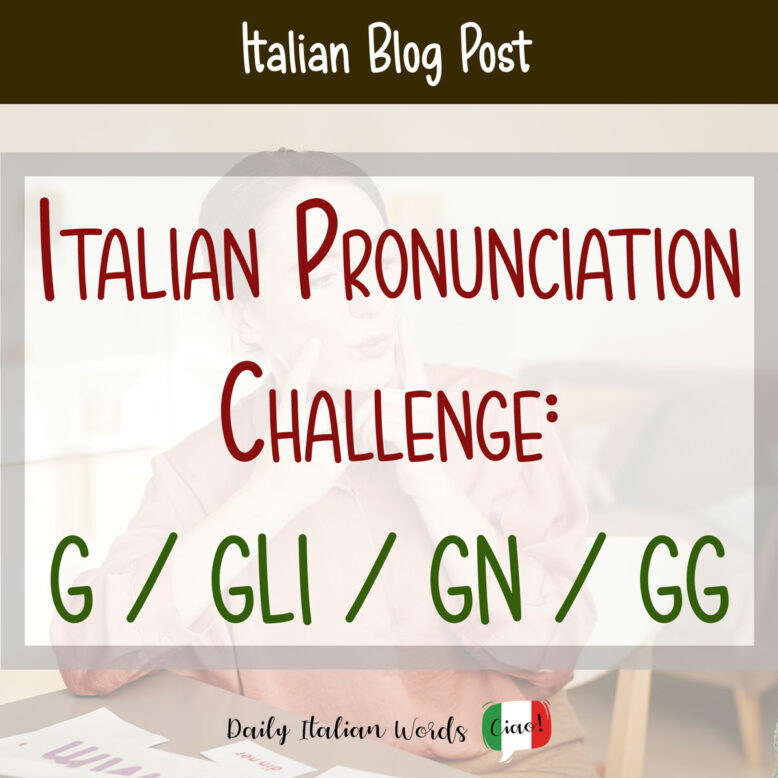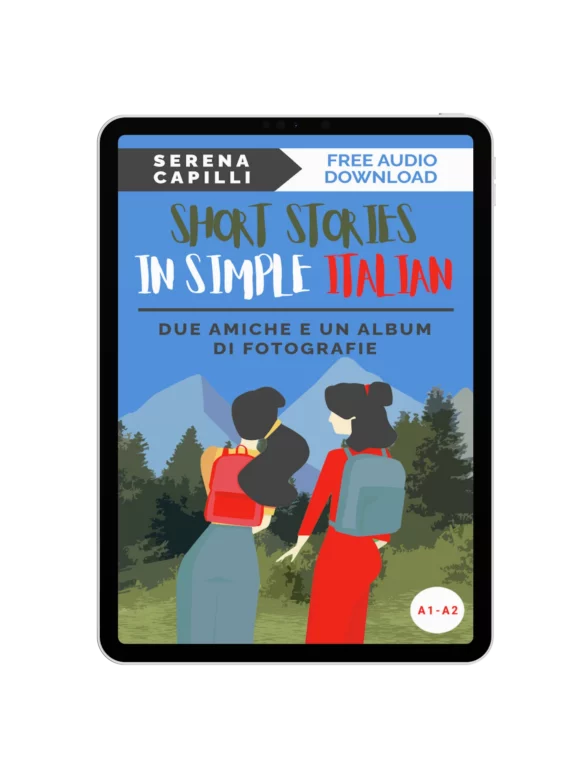Although Italian has gained the reputation of being a “phonetic language” – meaning that there is a direct relationship between the spelling and sounds – there are a few pesky letters that aren’t always pronounced in the same way. We already looked at the letter C a few months ago, and today we’re going to turn our attention to the letter G. Let’s begin!

The first important rule about the letter G in Italian is that, generally speaking, it represents two distinct phonemes in Italian, or in other words, it can be pronounced as a hard or soft sound.
Hard G
IPA symbol: /g/
In Italian, the hard G, which sounds just like the G in the English words game or go, can be represented by the letters G or GH depending on the vowel that follows. G is used before the vowels A, O and U, while GH appears before the vowels E and I.
- G + A: gara (race), ragazzo (young man)
- G + O: gonna (skirt), ago (needle)
- G + U: Gucci (Gucci), ragù (ragu)
- GH + E: ghetto (ghetto), ghepardo (cheetah)
- GH + I: ghirlanda (wreath), maghi (wizards)
Gara – Gonna – Gucci – Ghetto – Ghirlanda
Be aware that if GH + I is followed by another vowel (such as O or A) and they are contained within the same syllable, the letter I becomes a [j] sound, similar to the letter Y in “yes”. For example:
- the GHIO in ghiotto (gluttonous) is pronounced GYO, not GEE-OH
- the GHIA in ghiaccio (ice) is pronounced GYA, not GEE-AH
Ghiotto – Ghiaccio
If GHI and the following vowel aren’t contained within the same syllable (e.g. diloghia – DI-LO-GHI-A), they are pronounced separately.
When G is followed by another consonant, it is almost always hard. For example:
Grazie – Glaciale – Grande – Globo
Thanks – Glacial – Big – Globe

Two Big Exceptions: GLI and GN
In Italian, there are two cases in which G + consonant does not result in a hard G. The first is the combination GLI, and the second, GN.
How to Pronounce GLI in Italian
This specific combination sometimes produces what is called a voiced palatal lateral approximant [ʎ] in linguistics. It resembles, but isn’t completely identical to the double LL sound in the English word million.
Here are some common words that contain the [ʎ] sound:
- GL + I: gli (the / to him / to them)
- GL + I + A: foglia (leaf), maglia (sweater)
- GL + I + E: glielo (it to him), moglie (wife)
- GL + I + O: taglio (cut), orgoglio (pride)
Note: When [ʎ] occurs mid-word, as in taglio and foglia, it is pronounced as if it were a double consonant.
Gli – Foglia – Moglie – Taglio
That said, a handful of Italian words containing GL + I do not feature the [ʎ] sound but rather a hard G. A characteristic all these words share is that GL + I is followed by a consonant rather than a vowel.
Glicine – Glissare – Glifo – Anglicano
Wisteria – To skate over – Glyph – Anglican
And of course, there is always the odd exception even to the exception, such as scientific terms like glia (the connective tissue of the nervous system) and gliadina (Gliadin), which are pronounced with a hard G rather than a [ʎ]. Thankfully these are isolated examples, so you probably don’t have to worry about them unless you’re a scientist or doctor!
How to Pronounce GN in Italian
The second exception is the G + N combination, which is always pronounced [ɲ]. It famously appears in the word gnocchi, a kind of Italian dumpling. Unfortunately this sound does not exist in English, so the only way to learn it is to practise saying lots of “GN words” until you get it right. Here are a few that are worth memorising:
Gnocchi – Giugno – Prugne – Spagna
Gnocchi – June – Prunes – Spain
Soft G
IPA symbol: /dʒ/
The Italian soft G is represented by a G followed by an E or an I. It sounds exactly like the English J, as in the words jester or jeans.
- G + E: gesto (gesture), gregge (herd)
- G + I: girare (to turn), giraffa (giraffe)
Gesto – Gregge – Girare – Giraffa
If G + I is followed by another vowel (such as O, A or U) and they are contained within the same syllable, the letter I becomes silent. For example:
- the GIO in giovane (young / young person) is pronounced like the JO in “Joe” (not GEE-OH)
- the GIA in giacca (jacket) is pronounced like the JA in “jacket” (not GEE-AH)
- the GIU in giugno (June) is pronounced like the JU in “juice” (not GEE-OO)
Giovane – Giacca – Giugno
If GI and the following vowel aren’t contained within the same syllable (i.e. energia – EN-ER-GI-A), they are pronounced separately.
Allergie – Psicologia – Bugie – Magia
Allergies – Psychology – Lies – Magic

Double GG
Many words in Italian contain a double GG. To pronounce this double consonant, all you have to do is pause briefly before releasing the G. All the other rules discussed above remain identical. Have a listen to the examples below:
Mannaggia! – Aggiungere – Maggio – Pioggia
Darn! – To add – May – Rain

Loanwords with G
The pronunciation of loanwords, or words adopted from another foreign language, can vary in Italian. More often than not, however, the original pronunciation of the letter G is preserved, as in the case the English gossip and gangster.
Heather Broster is a graduate with honours in linguistics from the University of Western Ontario. She is an aspiring polyglot, proficient in English and Italian, as well as Japanese, Welsh, and French to varying degrees of fluency. Originally from Toronto, Heather has resided in various countries, notably Italy for a period of six years. Her primary focus lies in the fields of language acquisition, education, and bilingual instruction.


